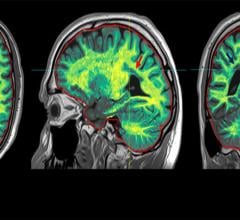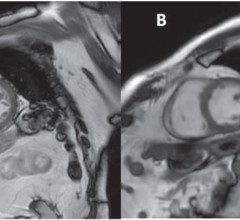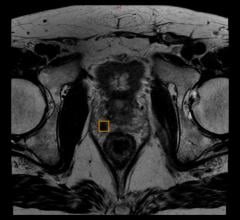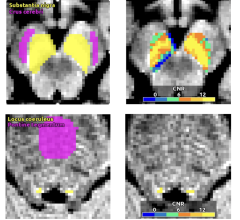The U.S. magnetic resonance imaging (MRI) market has been stable for the last few years. With an estimated value of $1.25 billion, the market has been flat with very low, if any, growth. It is predominantly a replacement market, with the majority of hospitals and imaging facilities upgrading older systems to newer ones. From a field strength standpoint, 1.5T and 3.0T systems dominate the market — approximately 65 and 35 percent, respectively.
Wide bore systems have emerged as the preferred choice for most healthcare and imaging facilities because they provide increased comfort and high image quality. Due to the financial landscape, however, what buyers want is not necessarily what they get.
New Buyers, New Focus
Wide bore scanners have gained widespread popularity among radiologists and patients. Typically 70 cm or larger, the scanners provide extra comfort for a significant population of patients who previously could not have an MRI — particularly those too large for small bore systems, and claustrophobic patients. The systems also produce high-quality scans, which were not available with their predecessor, the open bore system.
Although these benefits position the scanners as a top choice, much of the installed base of MRI scanners in the United States is still narrow bore. Stuart Clarkson, senior director of the MR business unit at Siemens Healthcare, postulated this is due to financial constraints. “Our impression at the moment is that a lot of hospitals with turmoil in financial markets have been holding onto their MR products a little longer than traditionally seen.”
A recent survey by IMV Medical Information Division also recorded this trend, stating, “The average age of installed MRI scanners in the United States has increased from 8.7 years in 2010 to 11.4 years in 2013.”
Evaluating Total Cost of Ownership
Financial decisions are now playing a greater role in purchasing MRI systems. According to Suresh Narayan, senior manager, strategic product management and marketing, magnetic resonance business at Toshiba America Medical Systems, this can partially be attributed to a shift in the buyer. Traditionally, radiologists and clinicians have heavily influenced buying decisions. Today, hospital administrators are making these decisions. With healthcare spending cuts dramatically slashing hospital budgets, administrators are thinking twice before making purchases.
The switch in buyer has therefore expanded the conversation between vendors and buyers. While clinicians were simply looking at the comprehensive portfolio of clinical exams, including the image quality and usability of the machine, Narayan explained that administrators are looking at aspects like cost of ownership and financial return. “They want to partner with a company and buy a solution that provides the least total cost of ownership over the life cycle of the product, while providing the best clinical value,” he said. Although vendors are continuing to work with physicians to ensure the applications provided meet clinical needs, with shrinking budgets, total cost of ownership has become a major factor in buying decisions, and has forced many healthcare facilities to hold onto their narrow bore systems longer.
Narrow Versus Wide Bore
As the installed base of MRI scanners in the United States reaches the end of its useful life cycle, most healthcare facilities are searching for the latest wide bore systems as replacements. One of the biggest trends leading the search is the healthcare industry’s increased focus on patient experience and satisfaction. “There is an increasing awareness today that hospitals have to adhere to in terms of ensuring that their patients are comfortable,” Narayan said. “Years ago, they didn’t think about how a patient felt or what the patient experienced in either MR or computed tomography (CT).”
It is no surprise then that wide bore systems account for the majority of the new systems market. According to Clarkson, approximately 85 percent of all systems purchased in the United States are wide bore. There is a small population of customers — about 15 percent — that continues to purchase small bore systems. This market segment is, again, predominantly driven by financial limitations.
“If your budget for an MRI is well under $1 million, it is very difficult to purchase a state-of-the-art wide bore MRI and hence, the less expensive narrow bore systems become the only viable option,” Clarkson explained.
This financial constraint is further exaggerated by the refurbished market, which is composed mainly of narrow bore, 1.5T systems. “There is a market segment that buys an MR scanner from $500,000 to $1 million, and it’s almost impossible to buy a wide bore at that price point,” Clarkson explained. “These customers buy refurbished MR scanners, which are coming out from institutions that are replacing their narrow bore scanner for a wide bore one. There are very few wide bore scanners in the refurbished market, so that’s where we see most of the narrow bore systems being sold.”
More Economical Solutions
While the benefits of wide bore cannot be argued, especially in the current healthcare climate, both Narayan and Clarkson do not anticipate the narrow bore segment of the market will shrink any time soon. “Five years ago if we were having this conversation I would’ve said that the economic segment was small with no appreciable growth, but now it’s actually growing,” Narayan said. Clarkson echoed this sentiment, predicting, “Buyers are going to continue to take out narrow bore for many years to come, and I think that will continue to feed the refurbished market.”
However, Narayan projected that vendors will try to introduce solutions with an increased focus on patient experience and comfort at a more economical price point. “The wide bore will hold its pricing, but more efficiencies and definite price erosion will happen, and there will be entry-level wide bores that this segment of narrow bore customers will look at,” he concluded.
Read more on the benfits of wide-bore MR systems.
MRI Comparison Chart
This article served as an introduction for the ITN comparison chart on wide-bore MRI systems. The chart includes all the players on the U.S. market and offers an apples-to-apples comparison of technical specifications. The chart requires a log-in, which is free and only takes a minute to sign up. It can be accessed at www.itnonline.com/content/mri-wide-bore-systems.


 April 17, 2024
April 17, 2024 








